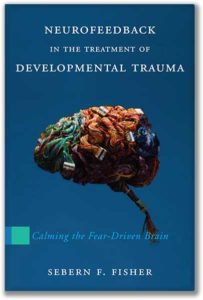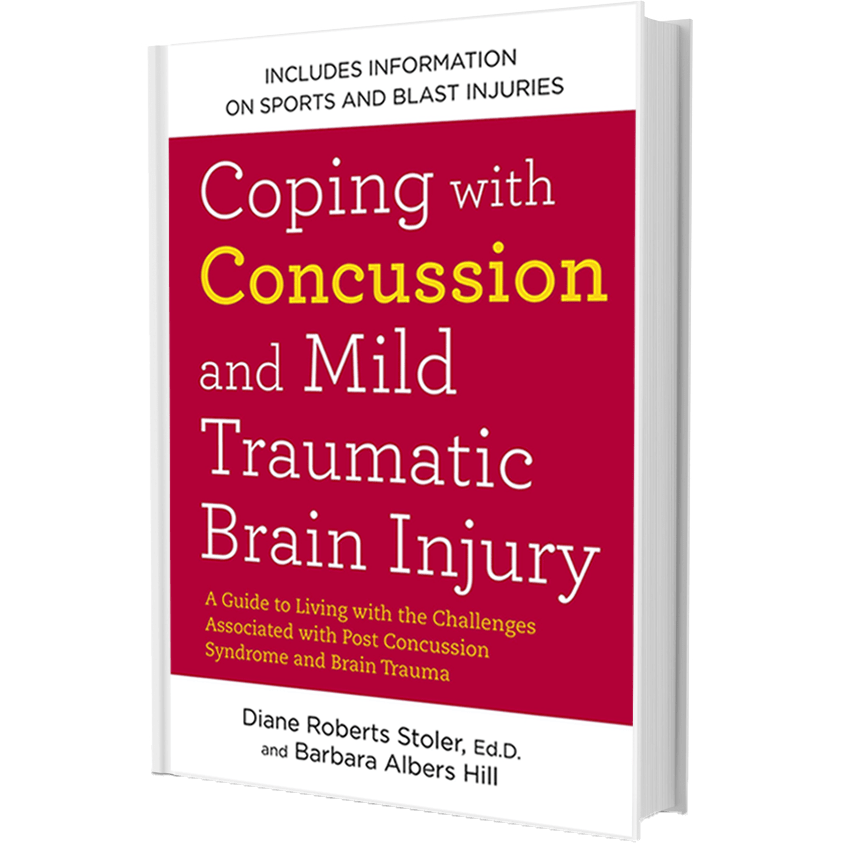Neurofeedback: Developmental Trauma
“Neurofeedback in the Treatment of Developmental Trauma: Calming the Fear-Driven Brain“, by Sebern Fisher
 Once again Norton Publishing asked me to review another book for them. When they mentioned it was Sebern Fisher’s book, “Neurofeedback in the Treatment of Developmental Trauma: Calming the Fear-Driven Brain”, I told them that knowing the content, I had actually offered weeks prior to review Sebern’s book for her and write a blog on it. What I discovered in this book is just remarkable!
Once again Norton Publishing asked me to review another book for them. When they mentioned it was Sebern Fisher’s book, “Neurofeedback in the Treatment of Developmental Trauma: Calming the Fear-Driven Brain”, I told them that knowing the content, I had actually offered weeks prior to review Sebern’s book for her and write a blog on it. What I discovered in this book is just remarkable!
Sebern Fisher’s book is a major breakthrough in the treatment of developmental trauma. Period. It is a must-read for clinicians dealing with individuals who have sustained developmental trauma. It is a must-read for clinicians who have been trained in neurofeedback, yet lack the understanding and methods needed to address the “fear-driven brain”. Lastly, it is a must-read for individuals whose lives have been hijacked by the “fear-driven brain”. This book provides a clear and concise explanation as to why this occurs.
The introduction of this book was written by Dr. Bessel van der Kolk, a world-renowned expert in trauma, now the medical director at The Trauma Center at JRI, and professor of Psychiatry, Boston University School of Medicine. As a trauma therapist for over 40 years and a neurofeedback practioner for the past 20 years, the last paragraph of his introduction really hit home with me. He wrote, “It amazes me that this powerful approach has been available as long as it has without yet finding widespread acceptance. Neurofeedback is applied neuroscience-it is a new frontier in helping innumerable people who up until now have been condemned to just make the best of feeling chronically fearful, unfocused and disengaged.”
My trauma training was at Boston University, where I had the privilege of working with Dr. van der Kolk. Years prior to this book being written, I approached Dr. van der Kolk at one of his trauma conferences about the use of neurofeedback as a method for treating trauma. However, he did not see the importance of neurofeedback as a vital method of treating trauma until Sebern convinced Dr. van der Kolk to visit her office for a weekend and meet the individuals whose lives have totally changed as a result of neurofeedback.
Many people do not know about developmental trauma and neurofeedback. I have written several blogs about neurofeedback and will continue to do so because of its many applications. To learn more please see my Neurofeedback Blogs.
Yet, what is developmental trauma? I was first introduced to this concept in my training at the Masterson Institute in 1980s with Dr. James Masterson, M.D. and my supervisor, trainer, mentor and now close friend, Dr. Candace Orcutt, Ph.D. My clinical staff, close colleagues, and I spent 7 years in training with the Masterson Institute, where we learned about Character Disorder, which is now called Personality Disorder, along with issues of attachment disorder (AD) and Post Traumatic Stress Disorder (PTSD).
In 1995, Dr. Orcutt wrote a chapter in the book, “Disorders of the Self: New Therapeutic Horizons” by James F. Masterson, M.D. and Ralph Klein, M.D. In Chapter 10, The influence of Early Trauma on the Developing Self, on page 181, she wrote, “For the purpose of this inquiry, developmental trauma is defined as PTSD that occurs in the developmental years. It is based on physical/sexual abuse sufficient to cause psychogenic amnesia and is likely to be a condition comorbid with disorder of the self, in which case it may contribute to overall developmental arrest of the self.”
Through Dr. van der Kolk’s research in both post traumatic stress disorder (PTSD) and reactive attachment disorder (RAD), it became clear that the absent mother and attachment trauma have as much affect as assault from sexual, physical and emotional abuse in child development. In 2005, Dr. van der Kolk proposed a new diagnosis of developmental trauma disorder (DTD). Since that time, the understanding and research on neglect has come to the forefront with the realization that this factor can have as much impact or even more than other forms of assault. Sebern Fisher explains, in neglect, the absence of the mother heightens the child’s fear state, because she is not there, either physically or emotionally, to prevent, address or repair this state of fear. The soothing and nurturing behaviors provided by a mother instill a sense of trust and safety within child. Winnicott termed it the “holding environment”. Without this soothing environment, the fear reaction continues and the neural connections grow stronger and even more reactive, resulting in a “fear-driven” brain.
A perfect example of someone who comforts and soothes is the character Aibileen in the novel “The Help”, when she comforts the little girl, telling her, “you is kind, you is smart, you is important.” In neglect, this type of soothing and comforting is totally absent, and as mentioned above, leaves a child living a in chronic state of fear.
When a child is born, it is born with billions of neuron connections. Every child in the world has the ability to speak every language in the world. However, if they do not use a specific neural connection, they lose it. This is the case with children of developmental trauma. When faced with adversity and danger, the fear reaction of the limbic system is activated. The child from 0-24 does not have access to the frontal lobe to help regulate this reaction. This connectivity starts around age 5 and is not totally connected until age 24 years old. It is the caregiver who should provide this regulation in the form of soothing, comfort and understanding.
Sebern Fisher wrote, “ In the absence of a regulating mother, the child does not grow and develop around the being of another, but alone, in the midst of ongoing, daily eruptions of his own powerful emotions. When these emotions are not regulated, they over-take and deform the development of the child.”
Symptoms of Developmental Trauma
- Empathic failure– Sebern Fisher explains in the book, “This is the impairment of the capacity to feel for the other and/or feeling for the other without end. The latter may not be true empathy as much as a truncated ability to see the other, and as a result feeling the pain of others as one’s own.”
- Affect dysregulation- Sebern Fisher explains in the book, “Without the original empathic, attuned presence, a child is left in the throes of her own affective storm. Affect regulation, which is the single most important accomplishment of the first 3 years of life.”
- Sensory dysregulation – examples: irritation of tags on clothing, balance problems, sound and light sensitivity, and quick mood changes
- Exhaustion
- Anger versus irritability
- Instability
- Panic
- Sleeping problems
- Memory problems
- Concentration problems
- Shame and blame
Many of these overlap the symptoms of Post Traumatic Stress Disorder (PTSD). The complete list of PTSD symptoms are list on the Post Traumatic Stress Disorder page.
How does Neurofeedback Help?
First and foremost, discovered some 20 years ago, is neuroplasticity, the inherent plasticity of the brain. The brain is able to make new neural connection. I’m living proof of it. After my brain surgery, I was told I as permanently brain damaged. However, through the use neurofeedback, my brain was able to make the necessary new connections. This is also true with developmental trauma. Sebern Fisher provides in depth understand of neuroanatomy, along with specific methods for helping the brain make new neural connections and repairing dysregulated ones. She has specific protocols, as Dr. van der Kolk, states in his introduction, “ways to reconfigure electrical communication patterns in the brain in order to help people feel more fully alive in the present” and she explains how and why they work.
I can say, as a trauma therapist, who uses neurofeedback as one of many treatment modalities, Sebern Fishers’ methods are tried and true. I use these methods and find them extremely effective.
“Neurofeedback in the Treatment of Developmental Trauma” provides a clear defined presentation of what developmental trauma is and how neurofeedback helps to form new neural connections, soothing regulation and emotional stability. As stated above, “to help people feel more fully alive in the present” and not live in the “fear-driven brain”. I highly recommend this book!
Please do not hesitate to contact me if you have questions about the “fear-driven brain” and trauma, and/or neurofeedback.
There is Help and Hope. There is a Way!™
– Dr. Diane®



Can a child have developmental trauma if they had a TBI at the age of 4 years and now 4 years since the injury has a fearful anxiety, shame/blame irritability and other symptoms that you described in this article? As she ages these symptoms seem to worsen. She isn’t seen by a doctor since the TBI because on the outside she seems fine. I’m just looking for ways to help her. I worry that as she grows older it will get worse. In school she keeps her emotions relatively intact. When she is home it’s another story. Everyday is such a challenge for her and her family.
Thank you for listening…
I need hope. I start this week with neurofeedback. I’m scared and don’t trust the person I’m doing it with. Even though I don’t even know him. But that’s a developmental trauma symptom, right? Not trusting. 🙂
I hope your neurofeedback is going well. If you are not happy with your current treatment team, please schedule a consult and I can recommend people that you can trust in your area.
My mom was induced and I have strong reason to believe that I was traumatized by it and now am an adult and have lived my whole life in this state.
interesting. Have you ever tried Neurofeedback? It seems to help a lot of people.